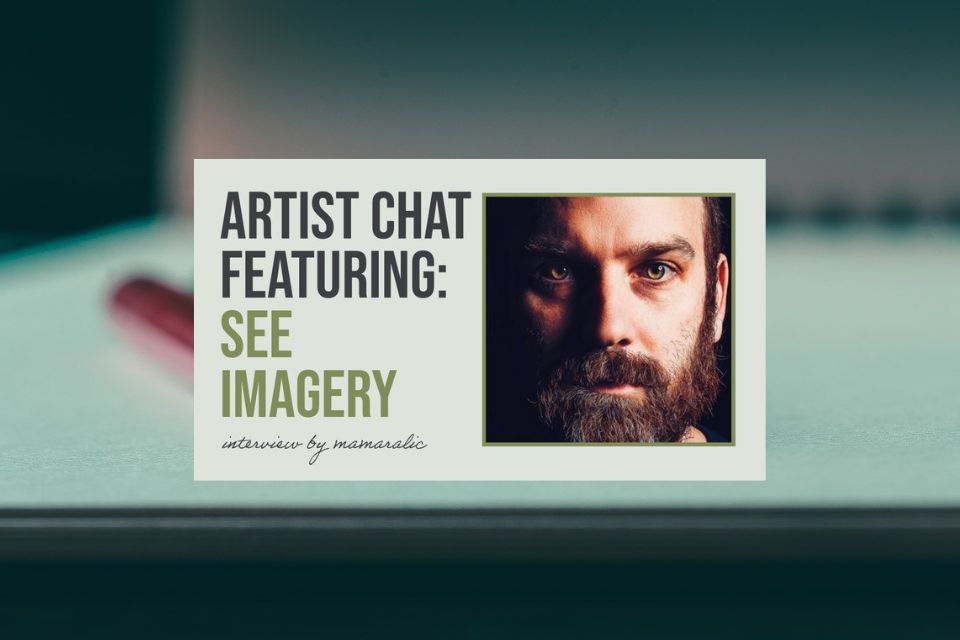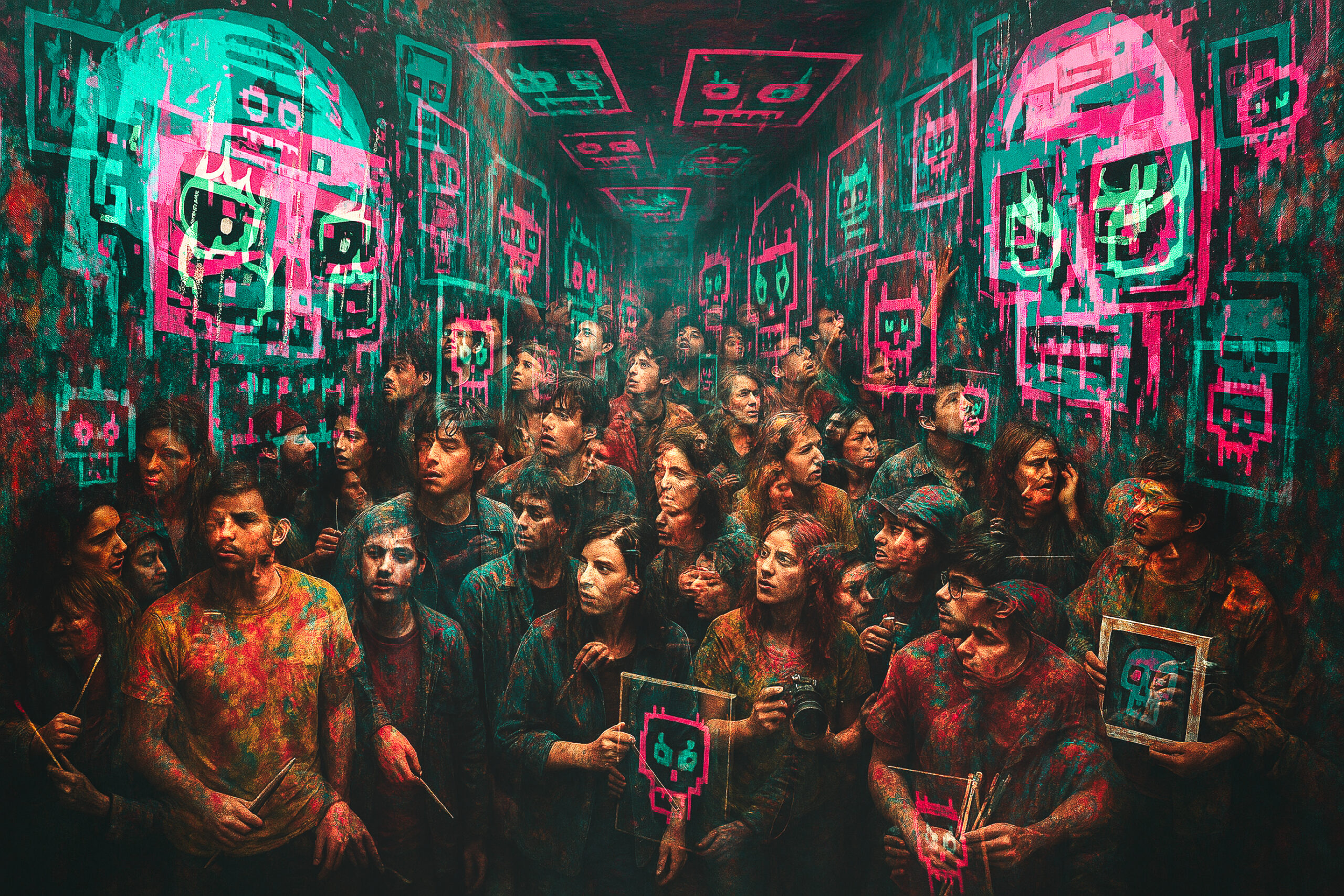Maybe you’ve heard the current craze, NFT this, NFT that. It’s all anyone can talk about in the art world lately and to be honest, it’s kind of exciting. Photographer Kate Woodman just sold her first NFT for $20,000. Imagine that!
CryptoPunks are selling for ungodly fortunes. According to the site, the average price of a CryptoPunk the last 12 months is $25,782 and the total value of all sales is $185.34M.
Got your attention yet? If you went and looked at the CryptoPunks you might be thinking, what the hell is going on? Well, never underestimate excess wealth and the nostalgia of the 8-bit days.
You know, I’m talking Mike Tyson’s Punch out. Little Mac, Glass Joe, King Hippo, Soda Popinski, and the big man himself, Mike Tyson. Anyone NFT that $hit yet?
Hmm, might be trademark issues so skip that, who knows though, feels kind of like the Wild West. People doing all kinds of things but maybe you’re thinking, what about photographers?
Does photography have a place in this NFT craze? Can I sell my photography as an NFT? Can photographers NFT?
I think so but you might be struggling with a bigger question right now.
What the hell is an NFT?
Realize, I’m no expert and still trying to wrap my head around all the possibilities but I’ll share what I’ve gathered without getting super technical.
Do note, there is a lot to the NFT space and I’m only going to begin to scratch the surface.
To better understand myself I created a NFT collection on opensea and rarible.
NFT stands for Non-fungible token. To understand, first let’s look at the definition of fungible.
Fungible
Fungible means “able to replace or be replaced by another identical item.”
An example of Fungible is the US dollar. If I take your dollar and give you a different dollar, nothing has really changed. The units are essentially the same and interchangeable.
Non-Fungible
An example of Non-Fungible is your camera and your Speedlight. The two units are unique and hold distinct and separate value.
In the realm of art, we might have two digital photography files. One is of a woman sitting at a desk and is perceived to be worth 10K, the other is of an apple and only valued at $200.
Non-Fungible Token
Now for the token part of NFT. Tokenizing or minting your work is creating a public record on the blockchain, that basically says, hey this belongs to me, I created it!
Think of the blockchain as a super redundant public ledger that stores and tracks the history of the work you created, forever.
It includes you, the original owner, but also whom you sell it to, whom they sell it to, and so on down the line. Nobody can replicate, duplicate, or counterfeit these transactions.
If you drank extra coffee today and are looking to wrap your brain around extra technical jargon, cryptocurrency, etc., you can check out this article: The Non-Fungible Token Bible: Everything you need to know about NFTs – OpenSea blog
How does turning your photography into an NFT help you the Photographer?
Now that you have a basic understanding of the concept of a NFT, what does it mean for you, the photographer? Should Photographers run out and start turning all their photography into NFT’s and if so, why, what is the benefit of NFT’s?
Consumption vs Ownership
In today’s digital world, photographers and artists are constantly worried about people stealing their work. We have a perpetual problem, or conundrum.
We want to allow for abundant consumption but struggle with maintaining clear ownership of our work.
We want to share our work with the world and yet we feel cheated and used when someone shares our image on their website or somewhere online without asking permission.
This is especially true when the perpetrator gives the artist no credit! Thank god for watermarks right. I’m only kidding.
However, think about this. You can go anywhere online to many different websites, look at, and consume an image of the Mona Lisa.
Heck, maybe you visit the Louvre Museum, take a photo of the Mona Lisa, print it, and hang it on your wall.
Do you own that artwork? No.
Do you think the Mona Lisa hanging on the wall in that one bar you visited is the original? No, probably not, we just assume it’s a copy and that the original is in the Louvre Museum.
Previously, it seemed impossible for an individual to claim ownership over a digital piece of artwork. Everyone can just screenshot, download, and copy everything? How does anyone prove ownership?
Now, imagine the blockchain becomes that place, that we as a culture, just instinctively look for the original creator/owner of all digital files. Imagine the blockchain is the Louvre of digital files.
You see, this is where NFTs and blockchain technology can change everything! It allows you to create something that nobody can duplicate – proof of ownership!
Proof of Ownership
As an artist, by turning your work into an NFT, you gain proof of ownership. It is essentially a certificate of authenticity that ensures that the piece is unique to you and your brand as a photographer.
You see, you aren’t really putting your artwork up on the blockchain. Instead, you are creating a token of proof that is bound to that piece of work.
In the physical world, this often takes the shape of a certificate of authenticity that accompanies the distribution of your print.
The certificate proves ownership and is extremely important to collectors to prove that the print is indeed the original and not a duplicate or copy.
Of course, these certificates are not beyond forgery. This is where the NFT and the technology supporting them step in.
This deed of creation, ownership, and the transfer of ownership, is stored on the blockchain, which is vastly superior to a paper trail and protects that ownership.
Additionally, perhaps even more than proof of ownership, it’ allows someone who believes in you to support you as an artist.
NFTs allow people to invest in you!
In this same new world of NFTs, let’s say someone changes their profile picture or cover photo to one of your photos without permission.
You are probably somewhat mad, “Like, hey, at least give the artist some credit people!”
On the other hand, a possible investor or someone who could further your career ends up seeing it. They wonder if the artist has any NFTs available because they would like to invest in the artist.
They go to the public ledger, aka blockchain, and find out the person who is using the image without permission does not own the image. However, they find you!
They see that you are a rather new artist with a small profile and a couple of reasonably priced NFTs. In fact, you only have 1 of 5 available first edition copies left.
Yes, that’s another cool thing about NFTs. You can create scarcity when creating your NFT but that’s another post.
Let’s pretend your Mom and Dad bought one, your sister another, you sold two to friends and now there is one left.
This person, collector, investor and stranger, well, they think you have great potential. Who knows, you could go on to become the best artist/photographer in the world.
They decide to purchase some of the NFT’s you created because they want to invest in you as a photographer, artist, or whatever.
Plus, just maybe, these first NFTs in your young budding career go on to become collectibles, and right now, they are only 50 bucks!
But what about Copyright and NFTs?
This is every photographer’s first question. What happens with copyright when it comes to creating, and selling NFTs?
Even if you go onto sell the piece it does not mean you need to sell your rights to the image. Of course, you the photographer can stipulate in the contract of the NFT that you are relinquishing copyright. It’s your choice.
If not, the buyer would have no right to use the image for commercial use. Their rights would be limited to displaying the work or eventually selling it to another buyer.
Royalties
Let’s talk about that, if the original buyer sells your work you can claim royalties. This stipulation is usually baked into the contract when creating/minting your NFT.
In the last couple of pieces I have minted I chose 10% royalties. That means I will get 10% royalties on all future sales of my piece as it changes hands. Pretty cool right?
NFT Trading
Finally, one of my favorite things about the NFT space is that we can all invest in each other. I like the idea of investing, but I don’t find a huge thrill in trading stocks and bonds. Boring!
I have also never been an investor in art. I do not go to shows, art galleries, etc. and buy pieces of art. However, this feels like my chance to start investing in the work of other artist. It just feels right.
You actually hold these pieces in your Crypto wallet as collectibles. How cool is that? I don’t know about you but this excites me.
It should excite you too!
A Final thought about NFTs – Keeping it Real
In a future post, I will go over the process of creating my first NFT on the platform Opensea and Rarible.
Also, it’s important to keep it real. Sure, some people are striking it rich fast and quick, but don’t have that expectation!
You should enter this space for the long game. I’m in this for the long game! I’m in this because I think it’s a unique and fun way to share my own art.
This is not a get rich quick scheme. You see many big transactions taking place and think, I can do that too. But for many, probably not!
The honest truth is that you need to enjoy your craft and be part of a community either on Twitter, Instagram, Discord, Facebook, Reddit, etc. You need to support them, bring value, and just make friends.
Show up, be kind, help, and the world will find you!








This article is great for photographers! Exciting times in the crypto world! I make A.I generated plant species ⚘ im a grad photographer self taught GAN breeder trying to prove to my lecturers that you dont HAVE to use a camera to call it photography, as my A.I system learns from photographs and morphs them into one.
https://opensea.io/accounts/Organic_NFT
[…] Yes, OpenSea is a NFT marketplace and essentially, you are creating NFTs. The Cards are not inherently viewable on the blockchain when you first create them in the App. However, any holder/collector of a card can claim them via Polygon crypto wallet, and bring them on chain. If you don’t even know what a NFT is than start here to learn more: What is an NFT? […]
[…] Ordinals” are essentially NFTs minted on the Bitcoin blockchain using satoshis, the smallest units of […]